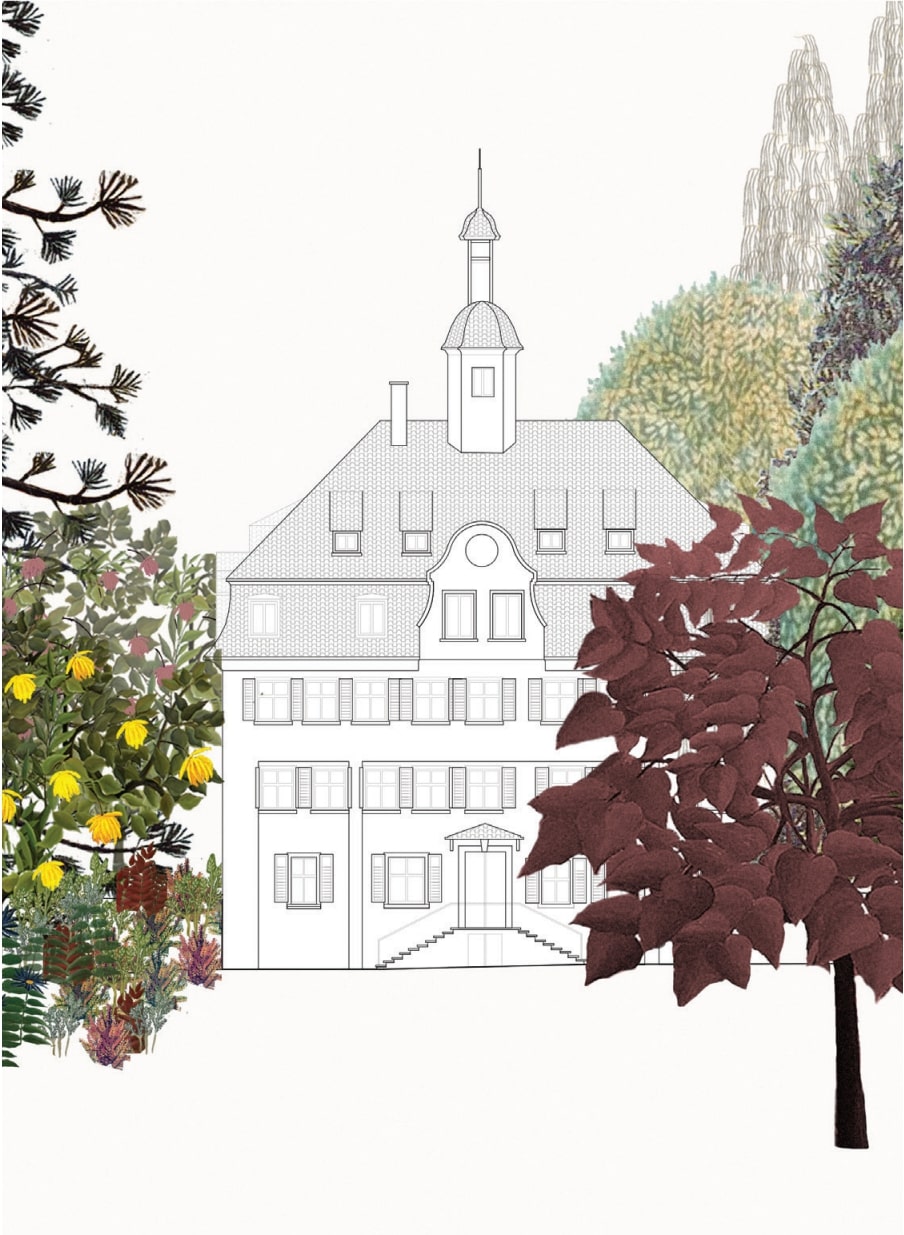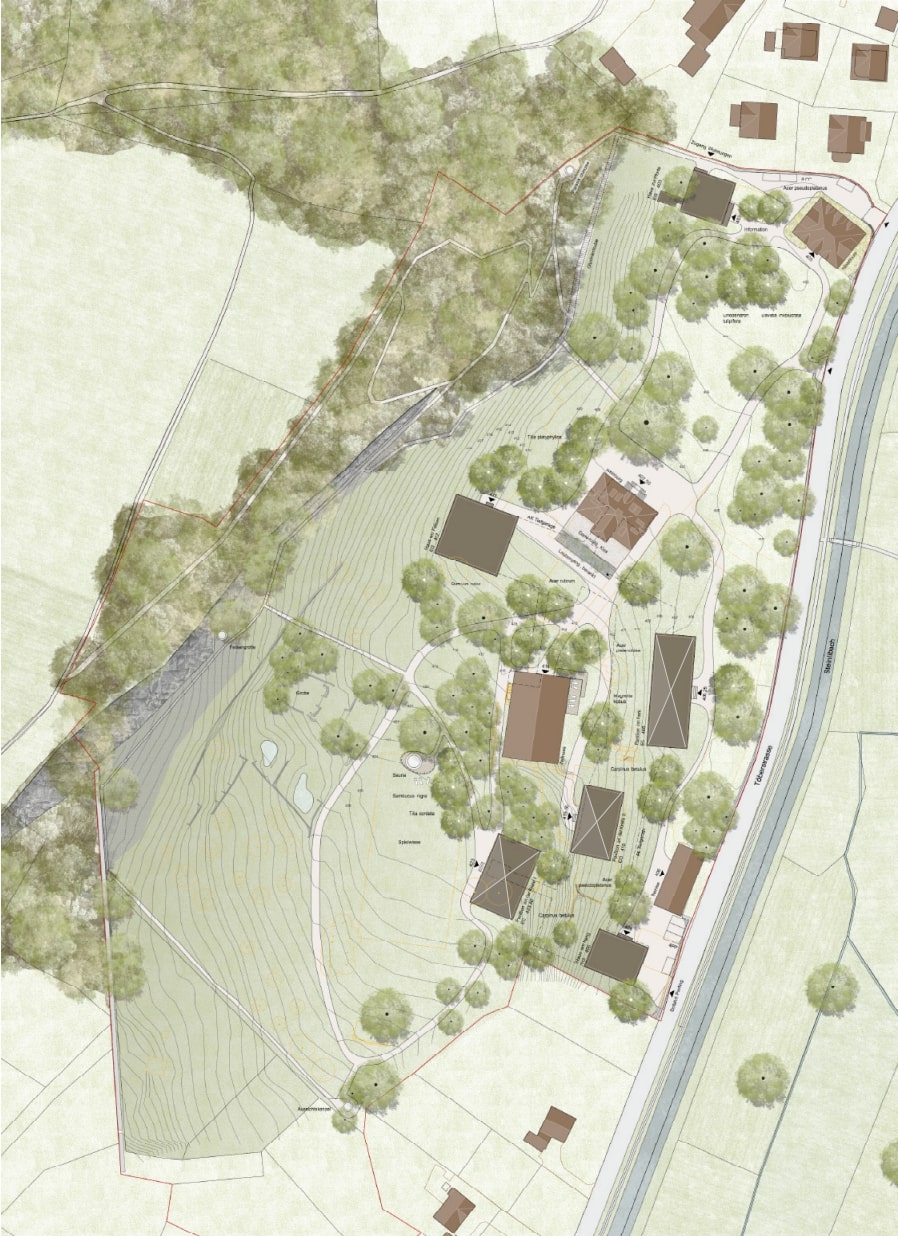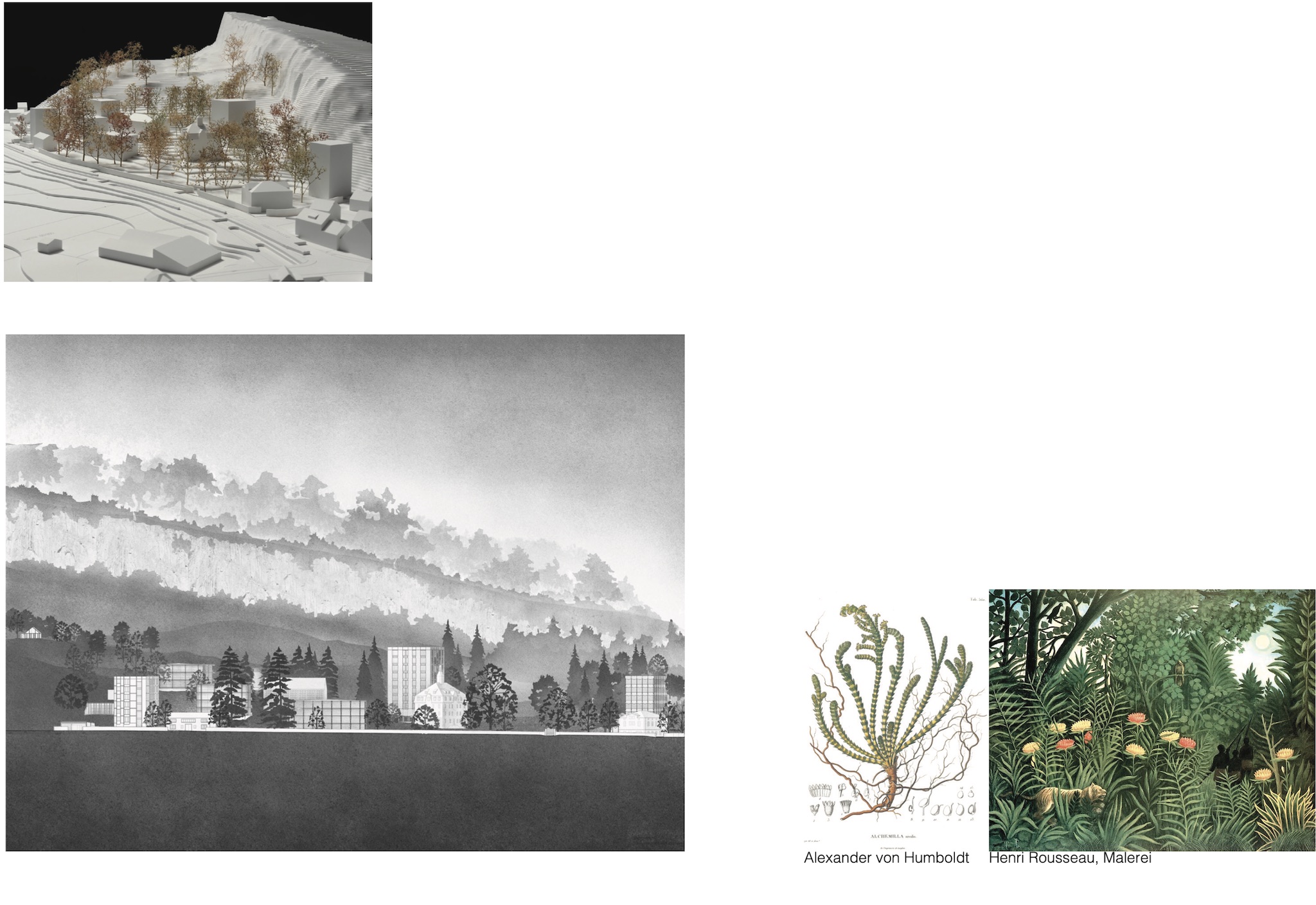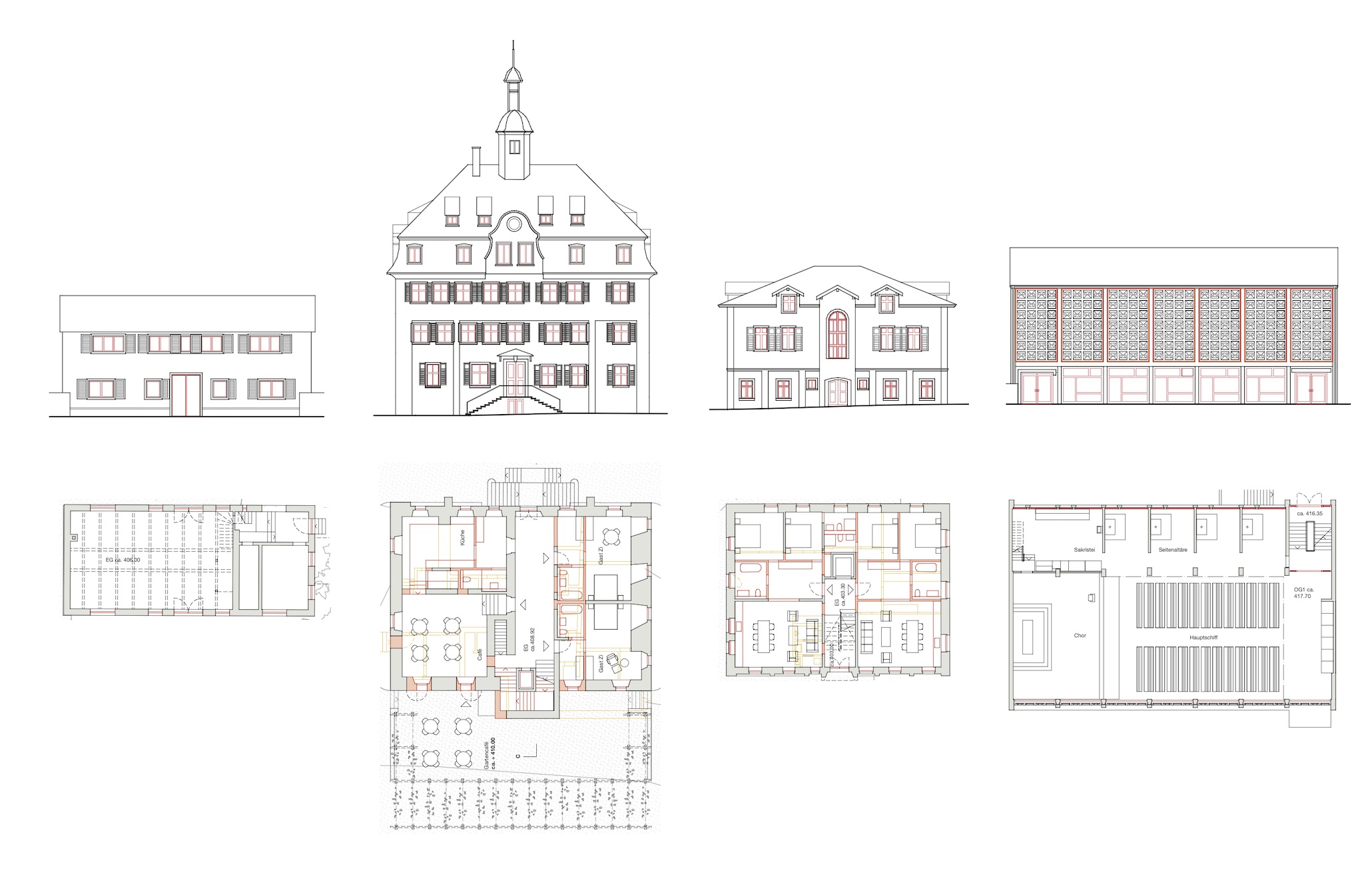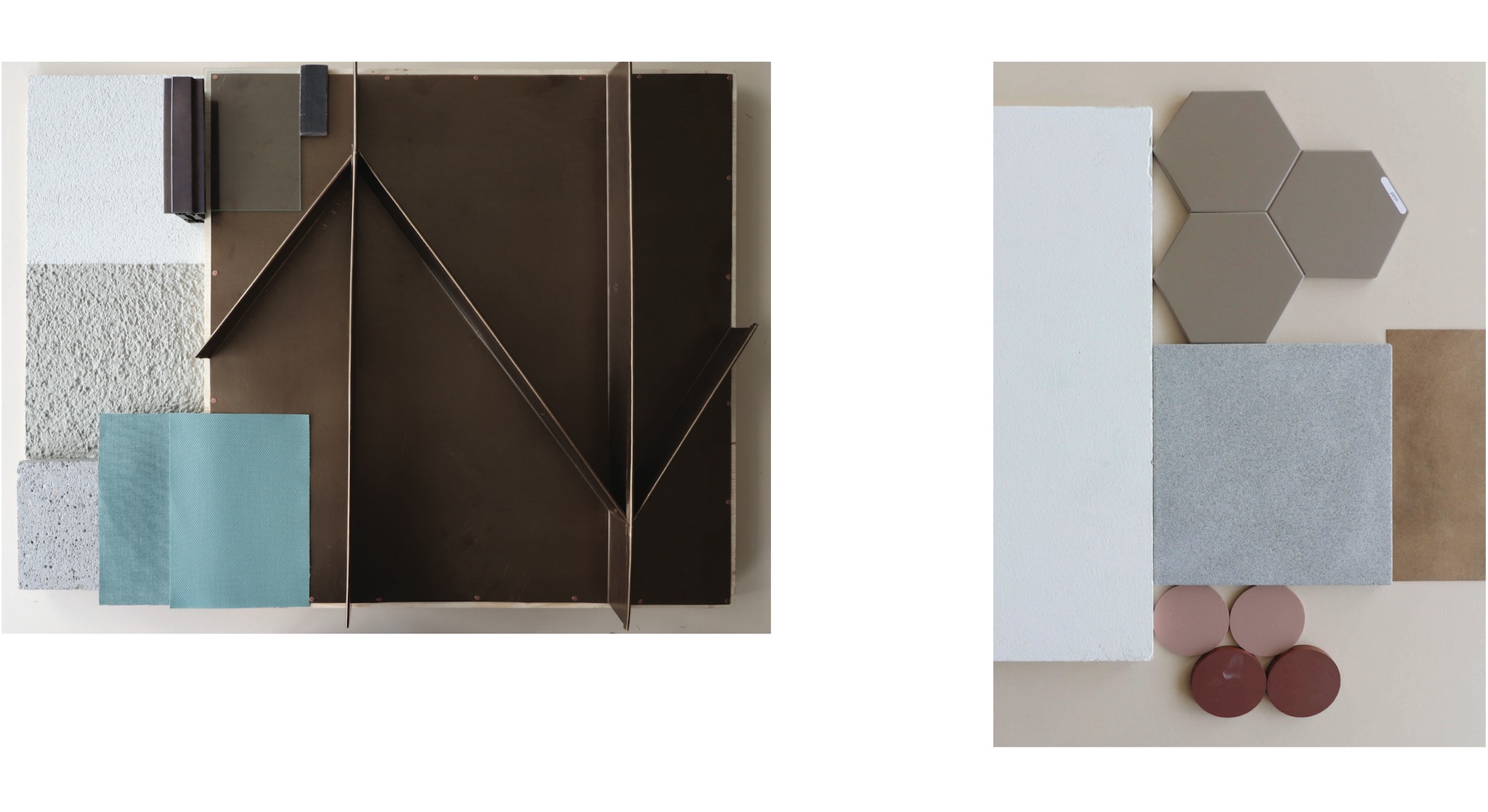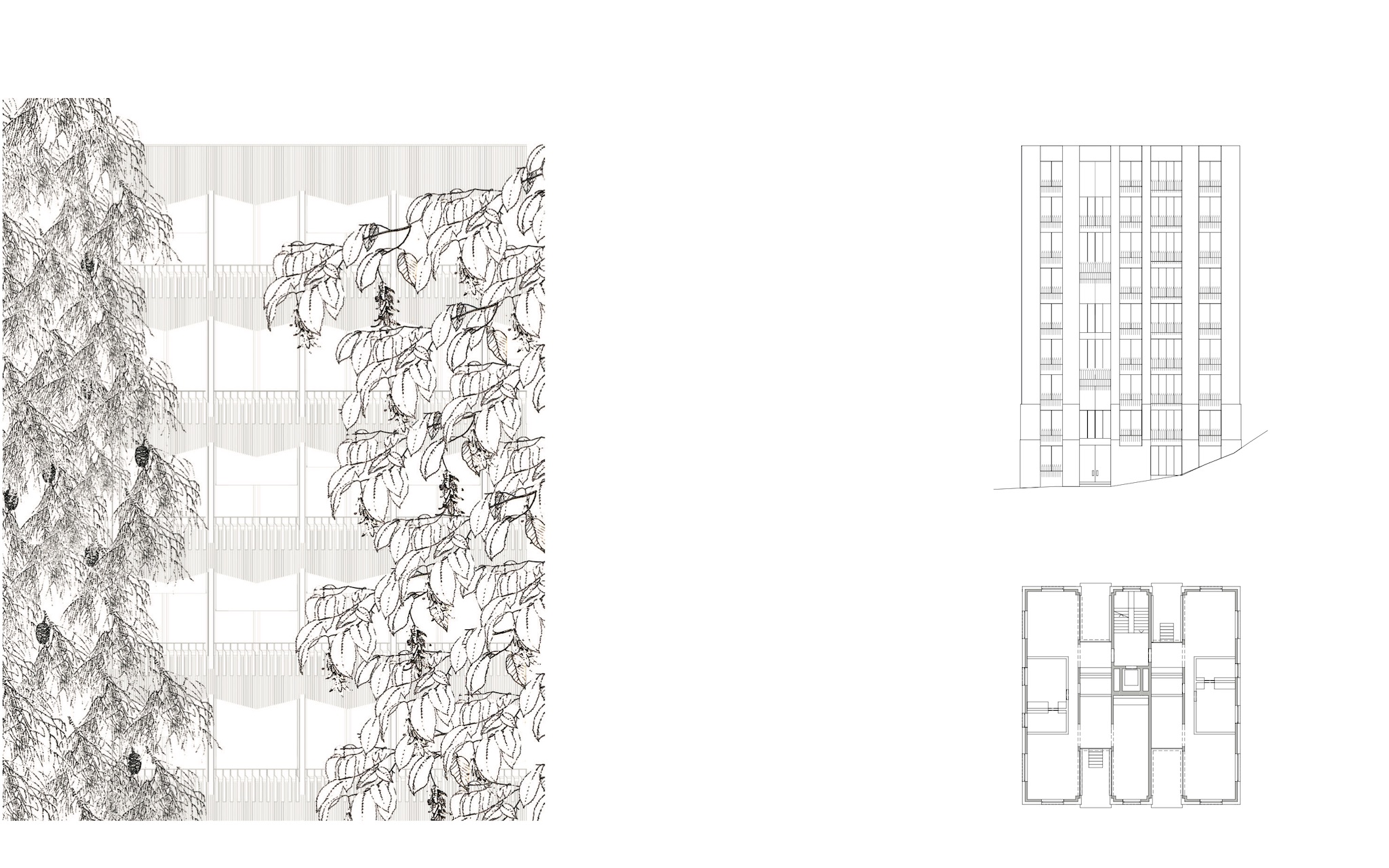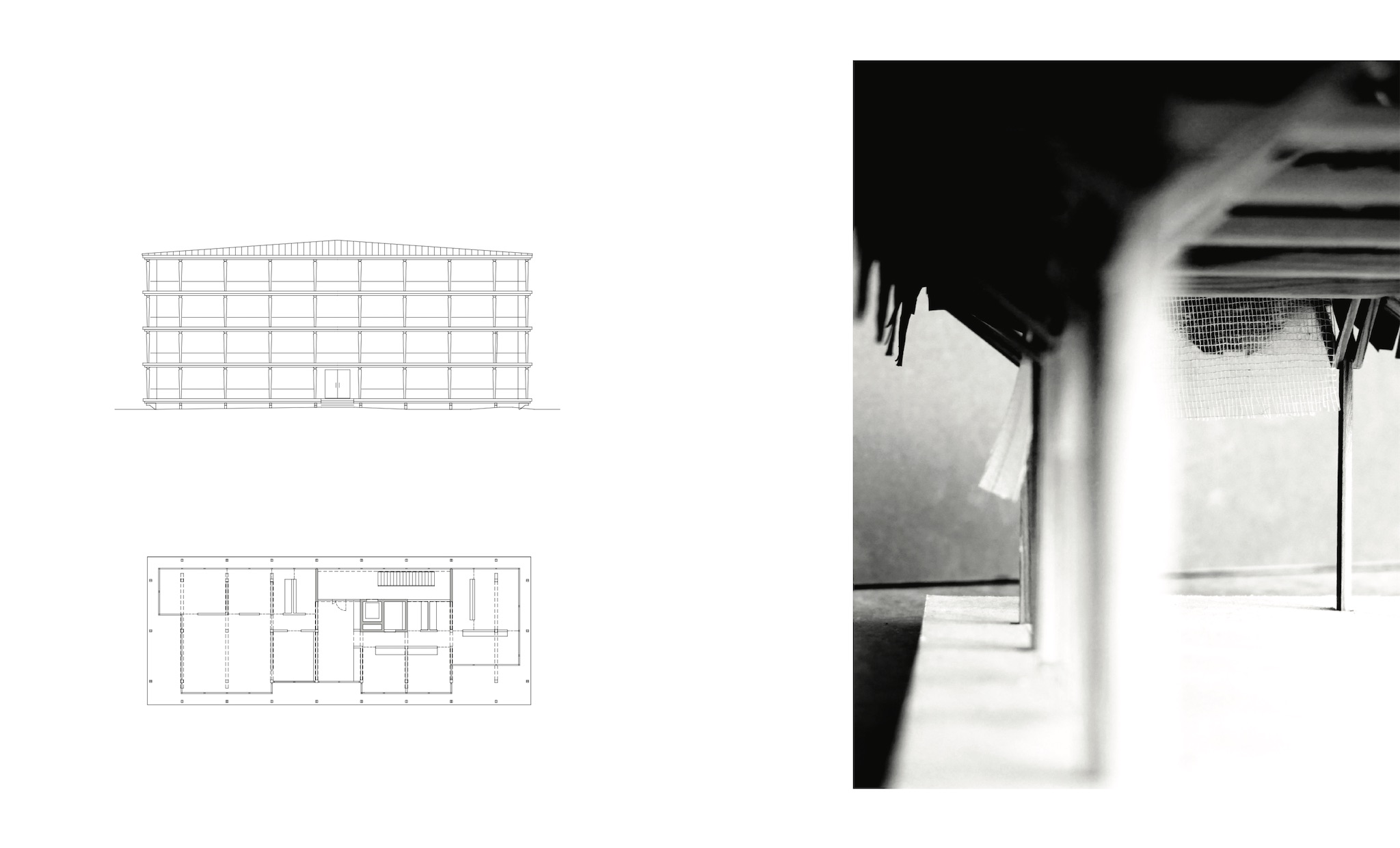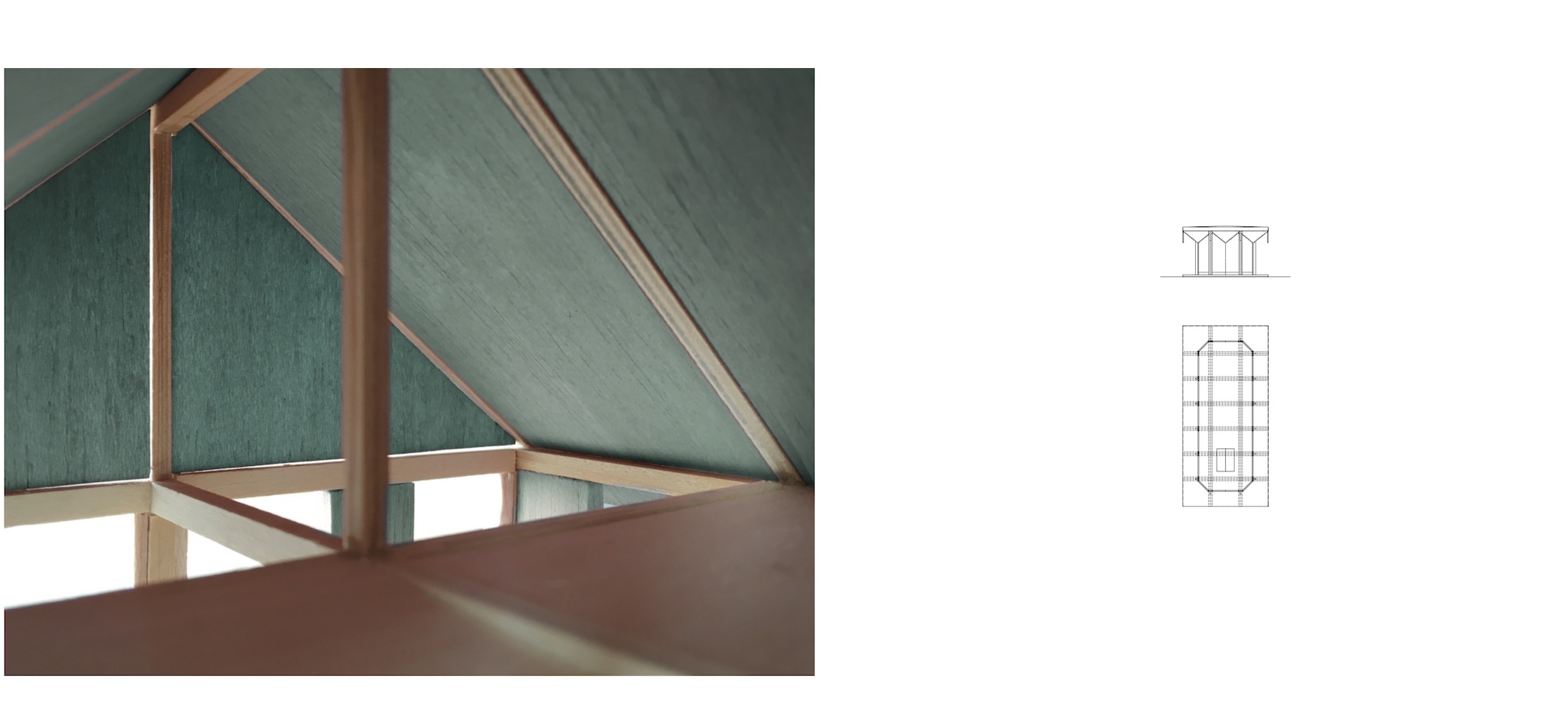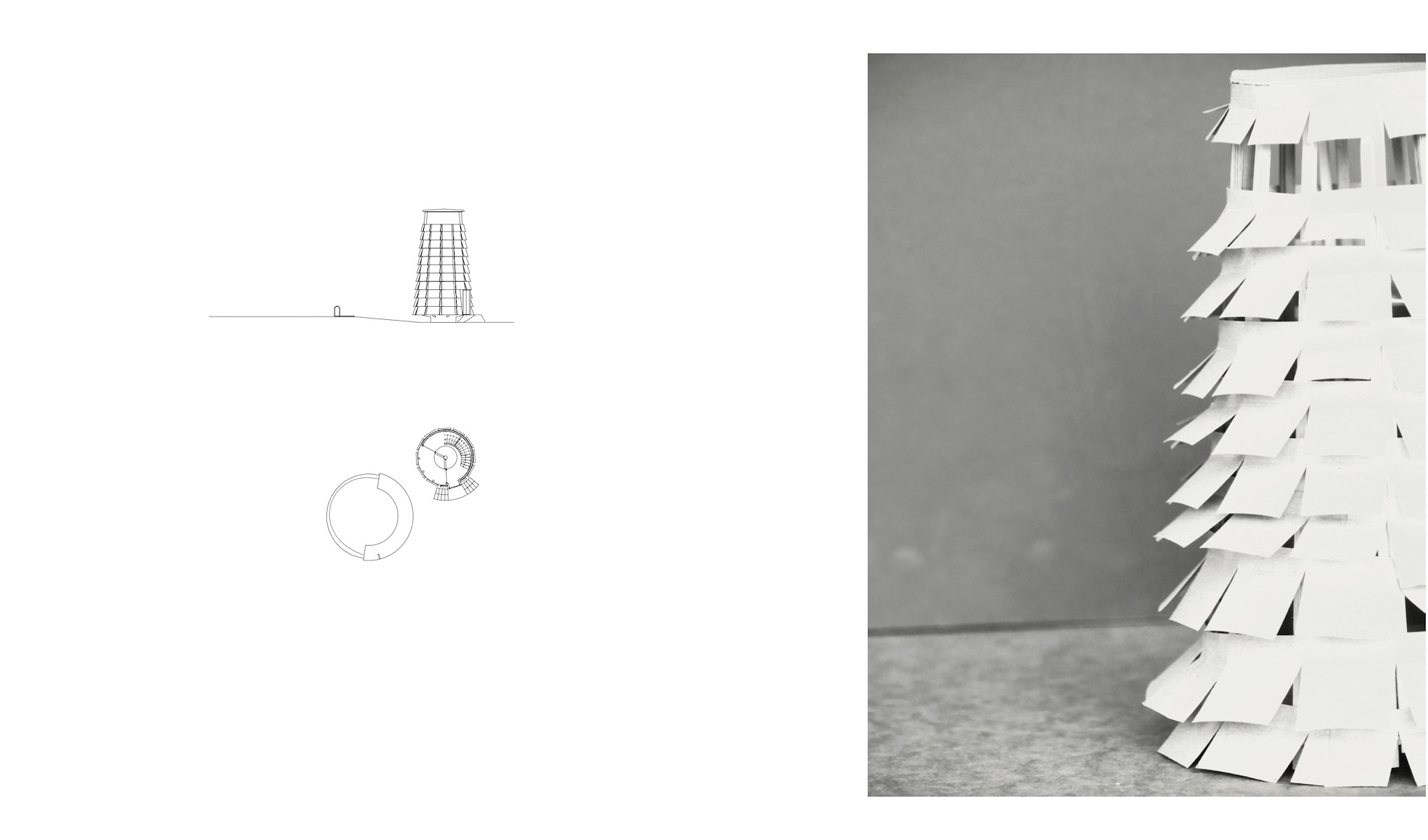It is not without reason that the Marienburg stands at this location between Lake Constance and the foothills of the Appenzell hills. The climatic characteristics and the historical garden give the Marienburg and its buildings their unmistakable identity. In a manner typical of the English landscape garden, the original design puts the peculiarities of the place at the center of perception: the expressive background of the rock band, the gentle orchards in the foreground, the view into the expanse of Lake Constance. Paths opened up the complex, made the topography and the exotic tree population experienceable, and staged places of special charm. Despite obscurities in the 20th century, the complex forms the powerful basic framework on which the conversion of the area from the formerly church-influenced educational institution to a residential location builds. The selective placement of the new buildings follows the conditions of the park landscape and the existing buildings and asks: "What do the open space framework and the cultural objects allow?" The building zones derived from this stand out as inner densification in the park space, while the landscape open space remains coherently preserved. The type of pavilion buildings, in horizontal proportions, fits situationally into the park. The type of tall houses peripherally marks off the area in addition to the historical wall and moves the castle into the center. This solitary setting of the new residential buildings creates a flowing structure of topographically staggered spaces and horizons that generate rich residential qualities. In their materialization and expression, the new buildings take up motifs of the place, from which specific spatial and constructive themes are developed, such as the plant-covered structural framework of the wooden buildings and the metal as a hanging, patinated dress of the solid buildings. The deliberately episodic construction and design vocabulary of the architecture is part of a narrative that productively uses the existing structure ideally as a repertoire and materially as a substance for renewal.

